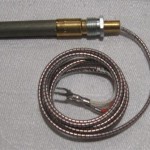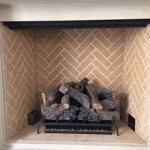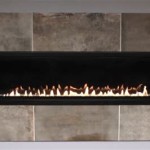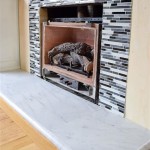How Much Are Wood Fireplace Inserts? A Comprehensive Guide to Cost Factors
Wood fireplace inserts offer an efficient and aesthetically pleasing upgrade to traditional open fireplaces. Instead of losing a significant portion of heat up the chimney, these inserts are designed to radiate warmth into the room, improving heating efficiency and reducing energy costs. Understanding the factors influencing the price of a wood fireplace insert is crucial for homeowners considering this upgrade. This article delves into the various elements that contribute to the overall cost, providing a comprehensive guide to budgeting for and choosing the right insert.
The initial cost of a wood fireplace insert is just one piece of the puzzle. Installation expenses, permits, and potential upgrades to the existing fireplace structure must also be considered. Failure to account for these additional costs can lead to budget overruns and unexpected financial burdens. A thorough assessment of the existing fireplace and a clear understanding of the desired features of the insert are essential for making an informed decision.
The following sections will explore the primary factors that influence the price of wood fireplace inserts, offering detailed insights into the various components contributing to the overall investment.
Factors Influencing the Base Price of Wood Fireplace Inserts
The base price of a wood fireplace insert is primarily determined by several factors, including the heating capacity, material quality, brand reputation, and efficiency rating. Each of these aspects contributes to the overall performance and longevity of the insert, directly impacting its cost.
Heating capacity, measured in British Thermal Units (BTUs), indicates the amount of heat the insert can generate. A higher BTU rating signifies a greater heating capacity, suitable for larger spaces. Inserts with higher BTU ratings generally command a higher price due to the larger firebox and more robust construction required to produce the increased heat output. Homeowners should carefully assess their heating needs based on the size of the space they intend to heat to select an insert with an appropriate BTU rating.
Material quality plays a significant role in both the price and the lifespan of the insert. Inserts constructed from heavy-gauge steel or cast iron are typically more durable and resistant to warping or cracking under high temperatures. These materials also retain heat more effectively, leading to improved efficiency. Less expensive inserts may utilize thinner materials, which can compromise their durability and longevity. The type of glass used for the viewing window also impacts the price, with ceramic glass offering superior heat resistance and clarity compared to standard glass.
Brand reputation can also influence the price. Established brands with a proven track record of producing high-quality, reliable inserts often command a premium. These brands typically invest in research and development to improve their products’ efficiency, emissions controls, and overall performance. While lesser-known brands may offer more affordable options, it is important to carefully research their reputation and customer reviews to ensure that the insert meets quality standards.
The efficiency rating, often expressed as a percentage, reflects the amount of heat the insert delivers into the room compared to the amount of fuel consumed. More efficient inserts waste less heat up the chimney, resulting in lower fuel consumption and reduced heating costs over time. Inserts with higher efficiency ratings generally have a higher initial cost due to their advanced combustion technology and design. However, the long-term savings on fuel can offset the higher initial investment.
Installation Costs Associated with Wood Fireplace Inserts
Installation costs can represent a significant portion of the overall investment in a wood fireplace insert. These costs vary depending on the complexity of the installation, the condition of the existing fireplace, and the local labor rates. A professional installation is crucial to ensure safe and efficient operation of the insert.
The installation process typically involves several steps, including inspecting the existing chimney, preparing the fireplace opening, installing a chimney liner, connecting the insert to the chimney, and sealing the unit. Each of these steps requires specialized tools and expertise, justifying the expense of professional installation.
Chimney inspection and cleaning are essential to ensure that the chimney is in good condition and free of obstructions or creosote buildup. A damaged or obstructed chimney can pose a fire hazard and prevent the insert from functioning properly. The cost of chimney inspection and cleaning can range from $100 to $500, depending on the complexity of the job and the local labor rates.
Chimney liner installation is often required to ensure that the insert is properly vented and that the chimney is protected from corrosive combustion gases. A stainless-steel chimney liner is the most common and durable option, providing a secure and airtight connection between the insert and the chimney. The cost of chimney liner installation can range from $500 to $2000, depending on the height of the chimney and the type of liner used.
Preparing the fireplace opening may involve removing existing dampers, cleaning the firebox, and ensuring that the opening is properly sized to accommodate the insert. In some cases, it may be necessary to modify the fireplace opening to fit the insert, which can add to the installation costs. The cost of fireplace preparation can range from $100 to $500, depending on the extent of the modifications required.
Connecting the insert to the chimney and sealing the unit is a critical step in the installation process. This ensures that combustion gases are properly vented and that no smoke or carbon monoxide leaks into the room. Professional installers use specialized materials and techniques to create an airtight seal, preventing any potential hazards. The cost of connection and sealing can range from $200 to $500, depending on the complexity of the installation.
Local labor rates can vary significantly depending on the region and the experience of the installer. It is advisable to obtain quotes from multiple installers and compare their prices and services before making a decision. Checking references and reading online reviews can also help ensure that the chosen installer is reputable and qualified.
Additional Costs to Consider
Beyond the base price of the insert and the installation costs, several additional factors can contribute to the overall expense. These include permits, hearth protection, accessories, and ongoing maintenance.
Permits are often required by local building codes to ensure that the installation meets safety standards. The cost of permits can vary depending on the municipality and the type of installation. It is important to check with the local building department to determine the permit requirements and associated fees. Failure to obtain the necessary permits can result in fines and delays.
Hearth protection is essential to prevent damage to the surrounding floor and walls from the heat generated by the insert. Building codes typically require a non-combustible hearth extension in front of the fireplace opening. The size and type of hearth protection required depends on the specific insert and local regulations. Hearth protection can range from a simple fire-resistant pad to a custom-built hearth made of stone or tile. The cost of hearth protection can range from $100 to $1000 or more, depending on the materials and the complexity of the design.
Accessories can enhance the functionality and aesthetic appeal of the insert. Common accessories include blowers, decorative surrounds, and remote controls. Blowers circulate warm air throughout the room, improving heating efficiency. Decorative surrounds can be used to conceal the gap between the insert and the fireplace opening, creating a more finished look. Remote controls allow for convenient adjustment of the insert’s settings. The cost of accessories can range from $50 to $500 or more, depending on the type and quality of the accessories.
Ongoing maintenance is necessary to ensure the insert’s continued performance and longevity. Regular chimney cleaning is essential to remove creosote buildup and prevent chimney fires. Professional chimney cleaning should be performed at least once a year, or more frequently if the insert is used heavily. The cost of chimney cleaning can range from $100 to $300 per cleaning. Other maintenance tasks include inspecting the insert for damage, cleaning the glass, and replacing worn parts. Proper maintenance can help extend the life of the insert and prevent costly repairs.
Fuel costs represent another significant ongoing expense. The price of firewood can vary depending on the location, the type of wood, and the quantity purchased. Seasoning firewood properly is essential to ensure efficient combustion and reduce creosote buildup. Purchasing firewood in bulk and storing it in a dry location can help reduce fuel costs. Alternatively, homeowners can consider using wood alternatives, such as wood pellets or manufactured logs, which may offer greater consistency and convenience.
In summary, the total cost of a wood fireplace insert is influenced by a multitude of factors. Careful consideration of these factors, including the base price of the insert, installation costs, permits, accessories, and ongoing maintenance, is crucial for making an informed decision and budgeting for the investment. A thorough assessment of the existing fireplace and the desired features of the insert, along with obtaining quotes from multiple installers, can help ensure a successful and cost-effective upgrade.

Estimated Page Fireplaces Stoves Inserts Wood Gas Pellet
.aspx?strip=all)
Cost Of Operating A Wood Insert Cord Calculator Regency

Wood Inserts We Love Fire

Lopi Premium Wood Fireplace Inserts Custom Hearth Fireplaces And Stoves

Napoleon Epi3 Wood Fireplace Insert Inserts By Rockford Chimney

T25i Timberwolf Wood Fireplace Insert Hearth Stove Patio

Ventis Hei240 Wood Burning Insert Rockford Chimney

Large Flush Wood Rectangular Nexgen Fyre Made In America Fireplace Xtrordinair

Large Flush Wood Arched Nexgen Fyre Made In America Fireplace Xtrordinair

Rais 60 Insert Wood Fireplace For
Related Posts








